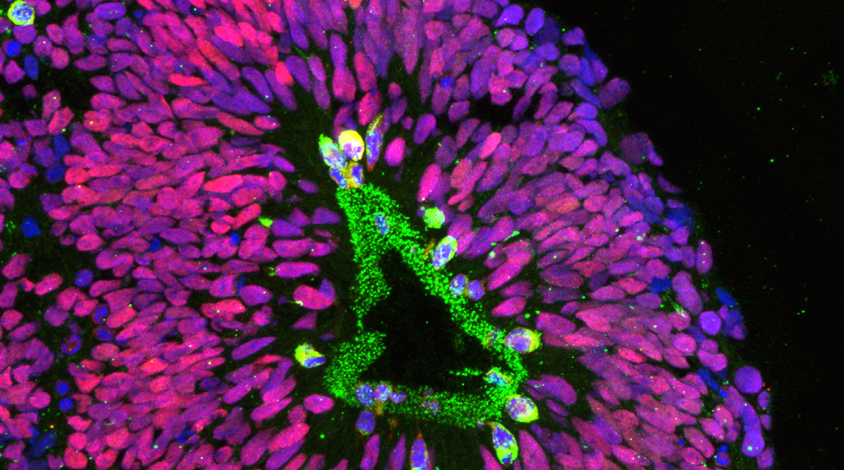
Merging ‘mini-brains’ recapitulates brain’s electrical balance
Fusing two spheres of neurons that either ramp up or tamp down brain activity yields neural networks like those in the developing brain.
Fusing two spheres of neurons that either ramp up or tamp down brain activity yields neural networks like those in the developing brain. Researchers presented the unpublished results today at the 2016 Society for Neuroscience annual meeting in San Diego.
Researchers can create neuron spheres in a dish starting from the skin cells of people with certain mutations. The spheres may contain neurons that excite surrounding cells, like most of the ones in the cerebral cortex, the brain’s outer rind. Or they may contain ‘interneurons,’ which inhibit neighboring cells.
Interneurons originate deep inside the brain and migrate to the cortex during development. They are thought to play an important role in autism.
In the new work, researchers fused the two types of neuron spheres. “In order to capture a fuller model of the brain, you need to incorporate interneurons,” says Fikri Birey, postdoctoral researcher in Sergiu Pasca’s lab at Stanford University in California, who presented the work.
Inhibitory cells migrate into the excitatory sphere, the researchers found. Excitatory neurons do not migrate into the inhibitory sphere, but some extend projections in that direction.
All linked up:
After 30 days, inhibitory neurons make up a significant portion of the excitatory sphere. At this point, the cells stop migrating and begin to branch out and form connections with excitatory neurons. The researchers recorded neuron firing in the spheres and found signs of both excitatory and inhibitory signaling.
“This tells us that they’re at least forming functional synapses,” says Christopher Makinson, a postdoc in the Pasca lab, referring to the junctions between neurons. “It’s reasonably convincing evidence that they’re all linked up.”
The fused mini-brains should help scientists investigate how autism-linked mutations may disrupt the balance between excitatory and inhibitory signaling. They may also reveal how interneurons migrate to their appropriate destinations in the brain.
“It’s been hypothesized for a long time that in forms of epilepsy and autism, the cells don’t migrate at the right time or they go to the wrong place,” says Pasca, assistant professor of psychiatry and behavioral sciences at Stanford. The merged spheres will help the researchers test this hypothesis, they say.
The researchers are now creating fused spheres containing neurons from individuals with genetic forms of autism. They plan to look for signaling imbalances and screen potential treatments.
For more reports from the 2016 Society for Neuroscience annual meeting, please click here.
Recommended reading

New organoid atlas unveils four neurodevelopmental signatures
Explore more from The Transmitter

The Transmitter’s most-read neuroscience book excerpts of 2025

Neuroscience’s leaders, legacies and rising stars of 2025


